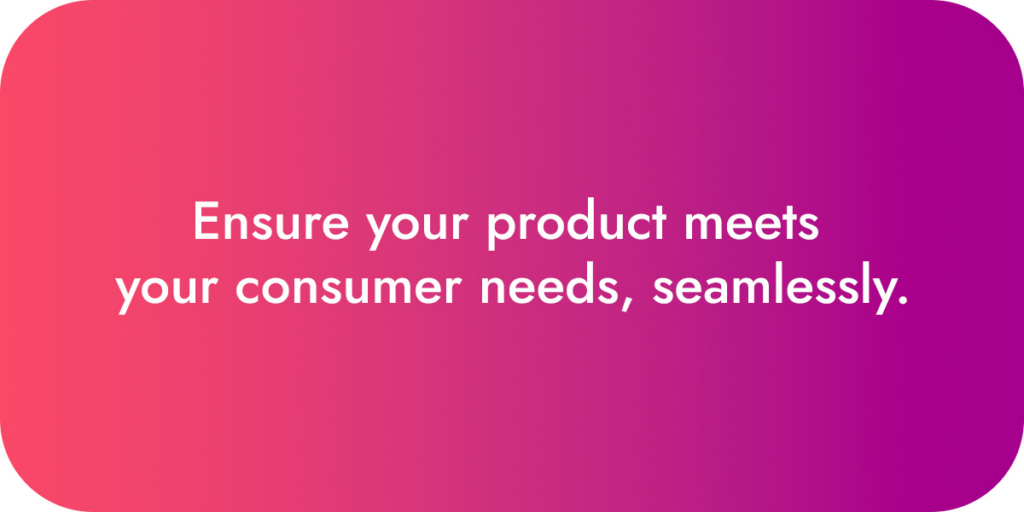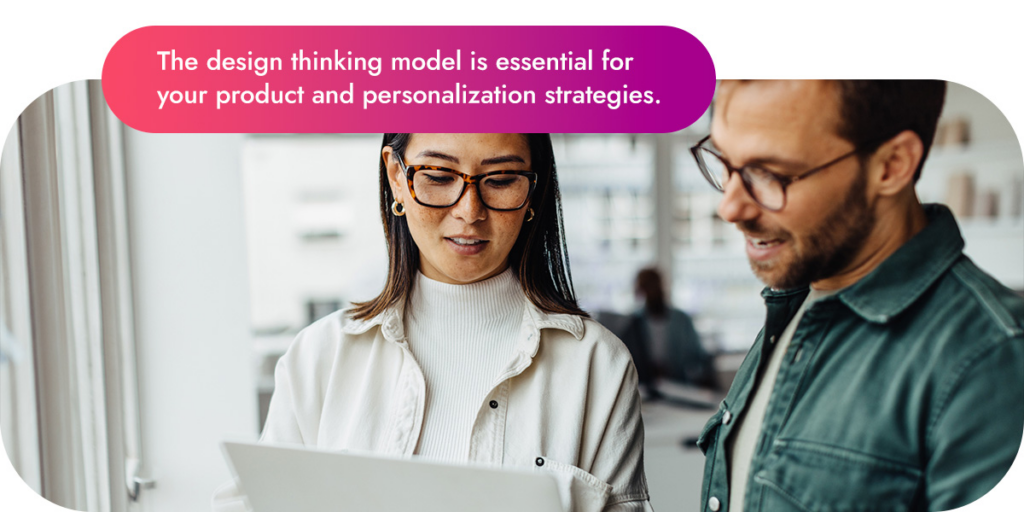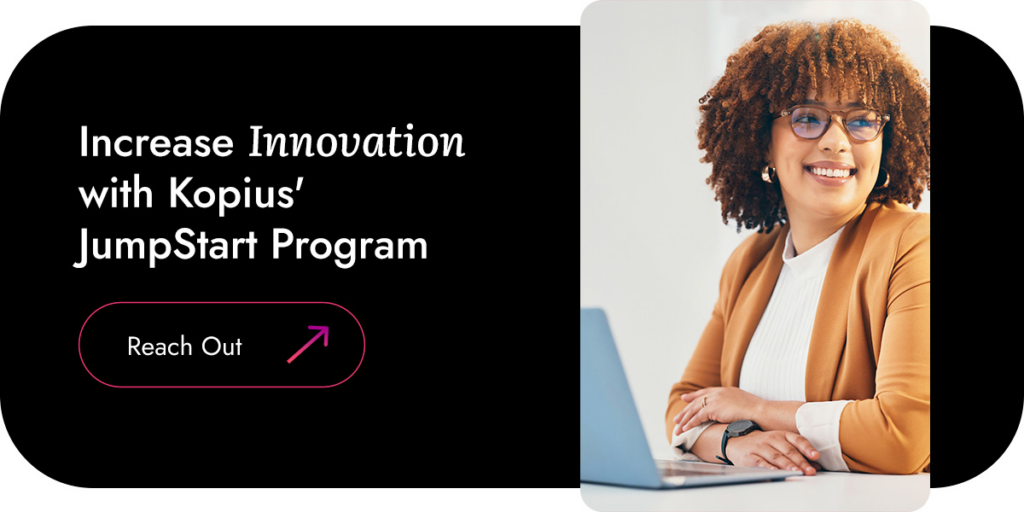
As the healthcare field rapidly evolves, the digital front door has become a valuable strategy for leveraging technology to deliver a better patient experience while reducing costs. A digital front door encompasses a conglomeration of features, from online appointment scheduling to telehealth visits, all selected to create cohesive, engaging, and high-value interactions.
What Is a Digital Front Door in Healthcare?
In healthcare, the definition of a digital front door encompasses a strategy for engaging with patients through user-friendly digital technology. It often uses technology the patients already have, like a smartphone and app, that unifies the patient experience and connects patients to care across the continuum. In short, a digital front door connects and scales the virtual care journey to give patients what they need, when they need it.
This idea started with traditional patient portals, and the digital front door has evolved to include a more overarching approach centered around patient-centered care and accessibility. Data-driven, highly personalized customer brands like Amazon and Apple are expanding into the healthcare sphere, so staying competitive with consumer-oriented experiences will be nothing short of crucial.
Take appointment scheduling, for example. Surveys show that 67% of patients prefer booking appointments online, and an overwhelming 95% of them are either “somewhat” or “much more” likely to choose a service provider offering online booking. Unsurprisingly, online appointment scheduling is one of the most prominent elements of digital front doors in healthcare.
Some providers use one robust application or portal to meet a virtual front door strategy, although you can do it with multiple systems. Features you might have in a digital front door solution include:
- Self-scheduling and care coordination.
- Bill pay and payment plans.
- Provider communications.
- Appointment reminders.
- Telehealth.
- Virtual forms, such as intake and consent management.
- Virtual check-in and pre-registration.
- Kiosks for in-office check-in.
- Data collection and analytics.
How Does a Digital Front Door Enhance the Patient Experience?
One of the primary goals of digital front doors is to improve the patient experience, which comes with various benefits for patients and providers, like improved clinical outcomes, adherence, and loyalty. With the industry’s shift to value-based programs, designing a great experience throughout the patient journey can also support increased revenue while reducing costs through efficient care delivery.
Using a digital front door helps improve experiences in many areas, such as:
- Improving accessibility with flexible, personalized tools.
- Supporting providers in delivering more attentive, effective, and efficient care.
- Empowering customers to actively manage their health.
- Meeting customers where they’re at with appropriate digital technology and options.
- Boosting patient loyalty through easy-to-use, convenient, and engaging programs.
- Reducing wait times with self-serve resources and streamlined care delivery.
These benefits often overlap and build upon each other. For example, when patients use self-service tools to check in early or submit forms, they reduce wait times in the office and help providers work more efficiently.
Patient Portals vs. Digital Front Doors
While patient portals are often a central element to digital front doors, they shouldn’t reflect your entire strategy. These systems do a great job of putting digital tools in one easy-to-access space. However, they often lack user-friendly designs. Many providers use portals offered by the company that built their electronic health record (EHR). EHRs are complex, unwieldy, and designed for providers. Translating the information into a consumer-friendly program proves challenging.
Similarly, portals may not offer tools to help providers in nonclinical aspects of care. A comprehensive digital front door strategy drives digital innovation through insights, like collecting information on how patients interact with you and how those interactions affect their care journeys. It also provides a more personalized, patient-centric approach. For example, you might offer educational resources for a patient with a new diagnosis, or you could prompt someone to activate reminders after they missed a payment.
Although patient portals are highly valuable, digital front doors address their shortcomings to create more cohesive and user-friendly experiences.
How Data Analytics Drive Healthcare Digital Front Doors
Data analytics is a cornerstone of digital front doors in healthcare. It can help you personalize care and make technology decisions based on real-world data about your patients and services.
Say you collect surveys from patients about their preferred payment methods. You find that many people pay larger sums with credit cards because they don’t have the funds available. With this new insight, you add payment plans to your online portal, helping more people afford care and offering a better experience, simultaneously boosting accessibility and satisfaction.
Leveraging data analytics solutions can help you identify new opportunities of all kinds and measure the efficacy of your digital front door strategy.
6 Tips for Implementing a Digital Front Door
Implementing a virtual front door requires thoughtful planning and consideration for various aspects of your practice. Consider these digital front door implementation tips to boost your chances of success.
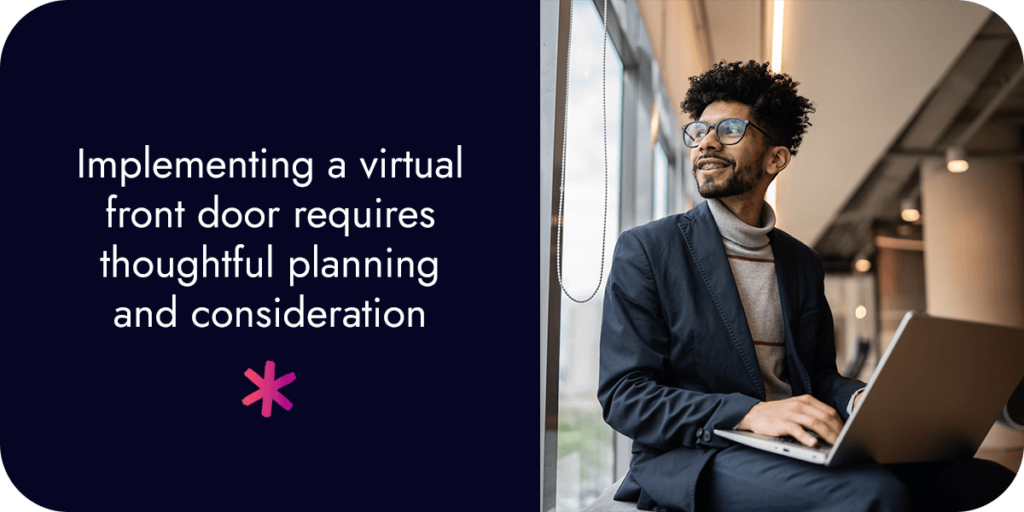
1. Craft a Robust Digital Front Door Strategy
Malia Jacobson, healthcare content strategist at Valence, suggests you start by identifying your overarching goals. “When embarking on a digital effort in healthcare, it’s important to start by understanding which changes you need to see in the organization. Are you pursuing improved patient satisfaction scores? Physician satisfaction? ED/Urgent Care wait times? Quality and safety scores? Each area targeted for improvement may influence priorities differently.”
Many healthcare providers are developing digital solutions to address patient satisfaction, reduce service demand, and reduce administrative overhead. In addition to standard features of a digital front door experience, providers should consider designing for experiences such as:
- Self-service: Provide tools for bill pay, self-scheduling, care coordination, and finding providers to offer streamlined and convenient access.
- Provider messaging and patient outreach: Improve access, loyalty, and engagement.
- Information and imaging libraries: Support patient and provider education.
- Practice management: Capacity and census management, forecasting, and discharge planning streamline operations.
- Insights-driven capabilities: Capabilities like infectious disease tracking, forecasting, and population health initiatives support proactive planning and informed decision-making.
- Premium privacy and security: Safeguard patient data and meet compliance requirements.
- Adoption-focused activities: Gamification and push notifications help increase awareness and usage of the program.
- Artificial intelligence (AI) and automation features: Features like chatbots reduce clinical burden and improve patient flow.
- Support for healthcare information exchange: Stay in compliance with Fast Healthcare Interoperability Resources (FHIR) standards and best practices.
As you ideate your digital products and strategy, it’s important to understand how these features interplay as part of a big-picture roadmap with a rollout timeline and strategy. You don’t have to release everything at once to be successful, and adding features as the platform develops and collects user feedback will future-proof the effort.
2. Keep Your Users Front and Center
“While a digital front door is a technology solution, it’s ultimately about humanizing the patient experience,” says Sam To, designer at Valence.
In the case of a digital front door, the users may be patients, families of patients, or healthcare providers. In nearly all scenarios, people value products that are easy to use and simple to set up and that follow a logical progression. This is especially true in a healthcare situation, which may be hypercharged by personal and situational stressors.
Equitable design should be at the forefront of design decisions because the healthcare organization needs to design for a wide array of users and needs. Fully understanding equitable design is critical to any digital front door strategy.
The design phase of the digital front door project should include user interviews, feedback sessions, prototyping, and more. Giving the UX/UI design team access to users early in the process can help to identify the best-case rollout strategy, reveal opportunities to differentiate from competitors, and deliver precisely the right content to users when they need it — all leading to better patient satisfaction scores.
3. Ensure System Interoperability and Integration
Healthcare organizations often use a wide array of technologies and programs. Your digital front door must connect with relevant systems. For instance, some businesses offer “online scheduling” by having the user submit a form. Then, the provider calls the patient to schedule the appointment. By seamlessly connecting an online tool with your scheduling system, you can provide a much better experience with real-time availability and no time commitment from your team.
Some programs offer easy integrations, while others require clever workarounds. However it happens, integration and interoperability are essential for creating cohesive experiences, achieving efficiency, and maximizing the value of your systems.
4. Get the Right Stakeholders Involved
Yuri Brigance, Valence’s director of software engineering, says, “This is more than a digital shift — the shift to a digital front door requires a culture shift within the organization.”
Experience has taught us that having the right people in the room can make all the difference in the success or failure of a major initiative, especially considering the role that change management plays here. People don’t resist change — they resist being changed. You must engage stakeholders from all impacted groups, from frontline workers to back-office operations. This engagement improves requirements documentation, roadmap planning, and buy-in as the work rolls out.
5. Uphold Security and Patient Privacy
Of course, all digital technology in the healthcare field demands top-notch security. However complex your system is, security and privacy help foster trust, maintain a good reputation, and ensure compliance with the Health Insurance Portability and Accountability Act (HIPAA) and FHIR.
While connecting people and systems, include robust data security compliance practices, such as risk assessments, monitoring, reporting, and training.
6. Use KPIs and Feedback to Measure Success
Key performance indicators (KPIs) and feedback from patients and providers allow you to measure your success after launching a digital front door and long after implementation. Incorporate a data strategy to collect and evaluate this information. Identify metrics relevant to your goals, decide how you’ll collect data, and regularly revisit KPIs to continuously improve upon your strategy.
Get Started on Your Digital Front Door Solution
Building a digital front door requires much more than buying a new software system. This comprehensive strategy requires careful analysis and expert development for your organization’s unique characteristics. With an effective strategy, a digital front door can transform your approach to patient engagement, driving innovation, increasing revenue, and boosting patient satisfaction.
At Kopius, we’ve designed a program to JumpStart your customer, technology, and data success.
Our JumpStart program fast-tracks business results and platform solutions. Connect with us today to enhance your customer satisfaction through a data-driven approach, drive innovation through emerging technologies, and achieve competitive advantage.
Add our brainpower to your operation by contacting our team to JumpStart your business.
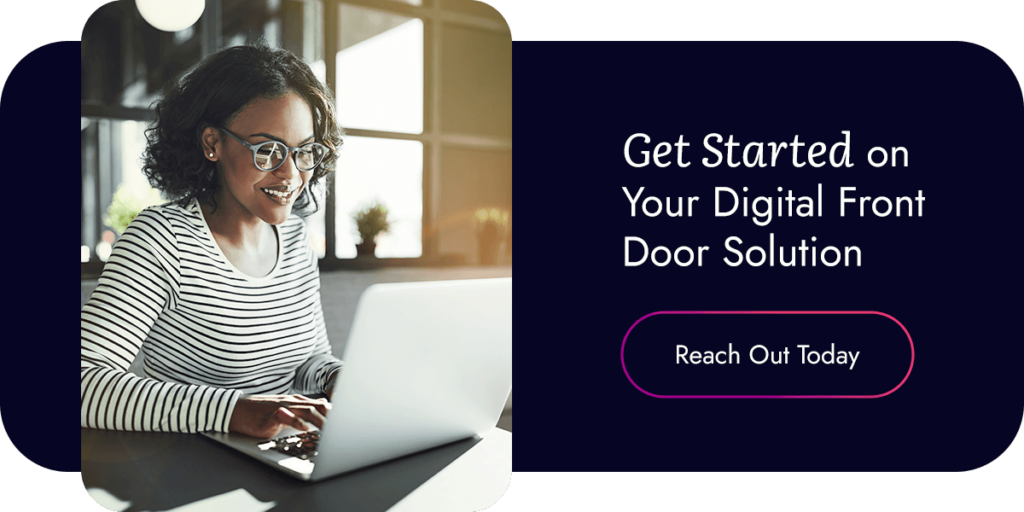
Related Services:


